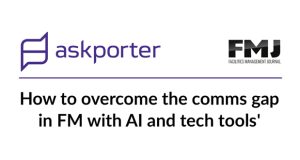DRIVING CHANGE
The real story, however, goes beyond technical differences. The future of BMS and EMS is being shaped by broader forces reshaping the built environment:
The Net Zero Imperative: Governments worldwide have legislated ambitious climate targets, with the UK aiming to reach net zero by 2050. As buildings account for roughly 40 per cent of global energy consumption, facilities managers are on the front line of the decarbonisation agenda. EMS platforms provide the data backbone required to measure, verify, and report progress toward these goals.
The Digital Transformation of FM: The “smart building” movement has shifted expectations. Cloud connectivity, IoT sensors, and AI-driven analytics are redefining how facilities are managed. BMS platforms are evolving from closed, proprietary systems into open, interoperable ecosystems. EMS, meanwhile, is increasingly seen as the analytical intelligence layer that unlocks the value of this digital infrastructure.
Resilience and Risk Management: Energy volatility has become a board-level concern. From geopolitical uncertainty to supply constraints, organisations are seeking greater resilience in their energy strategies. EMS technology enables demand forecasting, load shifting, and even integration with on-site renewables turning facilities from passive consumers into active participants in the energy marketplace.
The Human Factor: Finally, there is the question of occupants. Whether tenants, employees, or visitors, expect comfortable, safe, and sustainable spaces. BMS ensures comfort and safety; EMS ensures these are delivered efficiently and transparently. Together, they help facilities managers balance human needs with environmental responsibility.
PRACTICAL IMPLICATIONS FOR FMS
Think integration, not replacement: Most facilities will require both BMS and EMS functionality. The real opportunity lies in ensuring these systems communicate effectively.
Prioritise open systems: Proprietary solutions that trap data in silos limit future flexibility. Open protocols and cloud connectivity enable the agility needed in a fast-changing regulatory landscape.
Build a culture of data-driven decision-making: Technology alone won’t deliver results. Facilities teams must develop the skills and processes to interpret EMS insights and translate them into operational action.
Look beyond compliance: While regulation is a strong driver, the competitive advantage of optimised building performance extends to tenant satisfaction, asset value, and corporate reputation.
THE ROAD AHEAD
As the built environment becomes ever more connected, the line between BMS and EMS is blurring. Increasingly, we will see integrated platforms that combine operational control with predictive analytics, machine learning, and real-time reporting.
For facilities managers, this merge represents both a challenge and an opportunity. The challenge lies in navigating investment decisions, managing change, and upskilling teams. The opportunity is to position FM as a strategic function delivering not only efficient operations but also measurable contributions to sustainability, resilience, and organisational performance.
In the end, the real question is not “BMS or EMS?” but rather “How do we orchestrate both to deliver smarter, greener, and more human-centric buildings?” Those who can answer it will not only meet today’s demands but also shape the future of facilities management.





